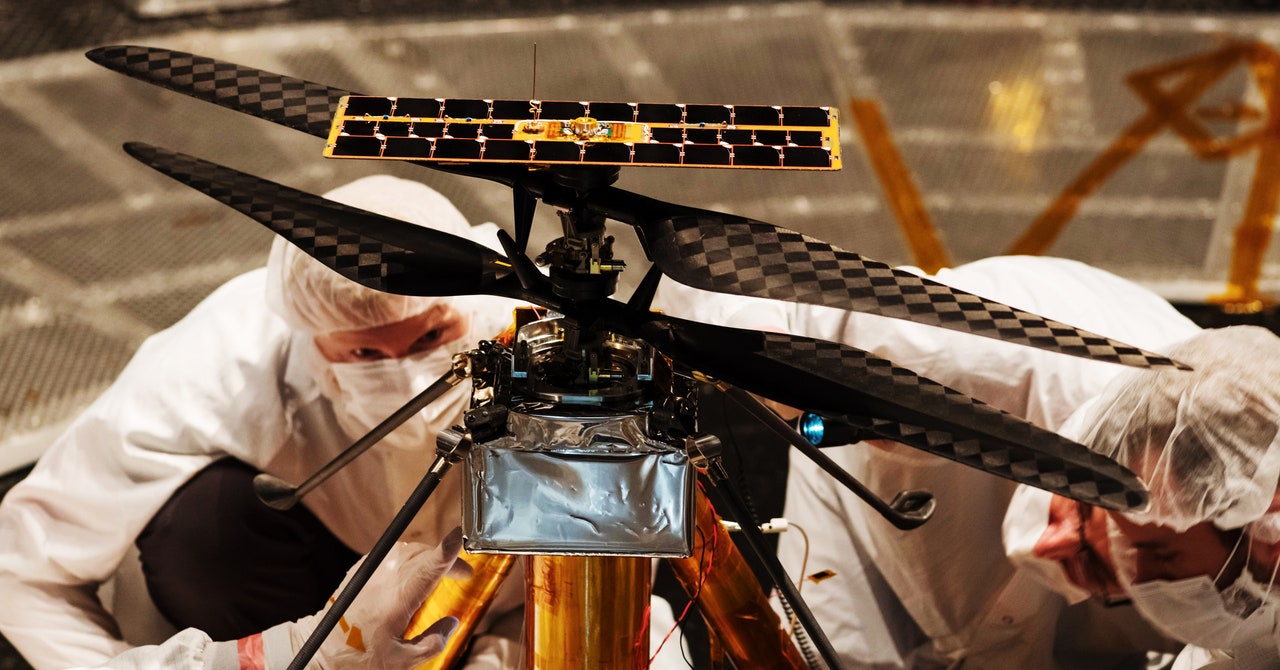Ingenuity, NASA’s Autonomous Mars helicopter, was only intended to complete five flights. But since the first flight that made history in April 2021, the helicopter has flown 28 times and preparations for the 29th are well underway. Depending on the Perseverance rover’s dust levels and schedule, that flight could take place as early as later this week. But now Ingenuity faces a new challenge: It’s unclear whether the helicopter will survive the coming winter on Mars, which begins in July.
Since a Martian year on Earth is about two years and the helicopter is in the Northern Hemisphere, this is Ingenuity’s first winter. As the solstice approaches, the days become shorter and the nights longer, and dust storms may become more frequent. All of that means less sunlight for the solar panels mounted above the helicopter’s two 1-foot rotor blades. Dust on solar panels recently ended operations for NASA’s InSight Mars lander, and the effects of cold on electronics are said to have played a role in the end of the Opportunity and Spirit Mars rover missions.
“We believe it’s survivable,” Dave Lavery, NASA’s program director for the Ingenuity Mars Helicopter, told WIRED, but “every extra day is a gift.” JPL Ingenuity team leader Teddy Tzanetos recently wrote in a NASA blog post that “any sol (Martian day) could be Ingenuity’s last.”
Last month, Ingenuity briefly lost contact with Earth due to a decline in battery life, most of which is destined for heating. NASA reestablished contact with Ingenuity after two days, but due to the battery level dropping below 70 percent and continued lower temperatures, Ingenuity will suspend use of the onboard heater overnight to conserve energy during the four-month winter. Heaters usually kick in when temperatures drop below -5 Fahrenheit, a figure that has been cut to -40 after last month’s battery shortage and communications outage. Outside temperatures during the winter on Mars can drop to -112, increasing the chance of damage to electronics inside the helicopter.
On Monday, NASA announced the failure of a sensor, which delayed Flight 29 and forced NASA to uplink a software patch and rely on another sensor to control Ingenuity’s navigation algorithms.
Dust storms are an X factor. A study published in May by a team from the University of Houston examined data from NASA sensors over a period of four Martian years and found that imbalances in solar energy and warm weather in the south increase the likelihood of massive dust storms hitting Earth. can cover. whole planet. Spring and summer are known as storm seasons, but the chances of severe storms decrease as the north approaches the winter solstice, says University of Houston associate professor Liming Li. But there’s a caveat: The study is global and doesn’t consider any particular region. Also, conditions in craters can be different than on the rest of the surface, and the helicopter operates in the Jezero Crater.
“It’s hard to say,” Li said when asked if more dust storms are on the way. “It’s difficult to get a clear picture of the radiation budget at Jezero Crater before we actually measure it.”
While Ingenuity is shutting down normal flight operations, the team will focus on transferring data such as flight performance logs and high-definition images from the last eight flights and making software upgrades. Based on a climate model, NASA expects solar energy levels to recover to levels that can resume normal activity this fall. If Ingenuity is able to heat its systems again at night in September or October, it can resume regular flight operations, explore potential sites for the Perseverance rover to store a collection of rock and soil samples, and investigate what scientists think there used to be a river delta in the Jezero crater.

